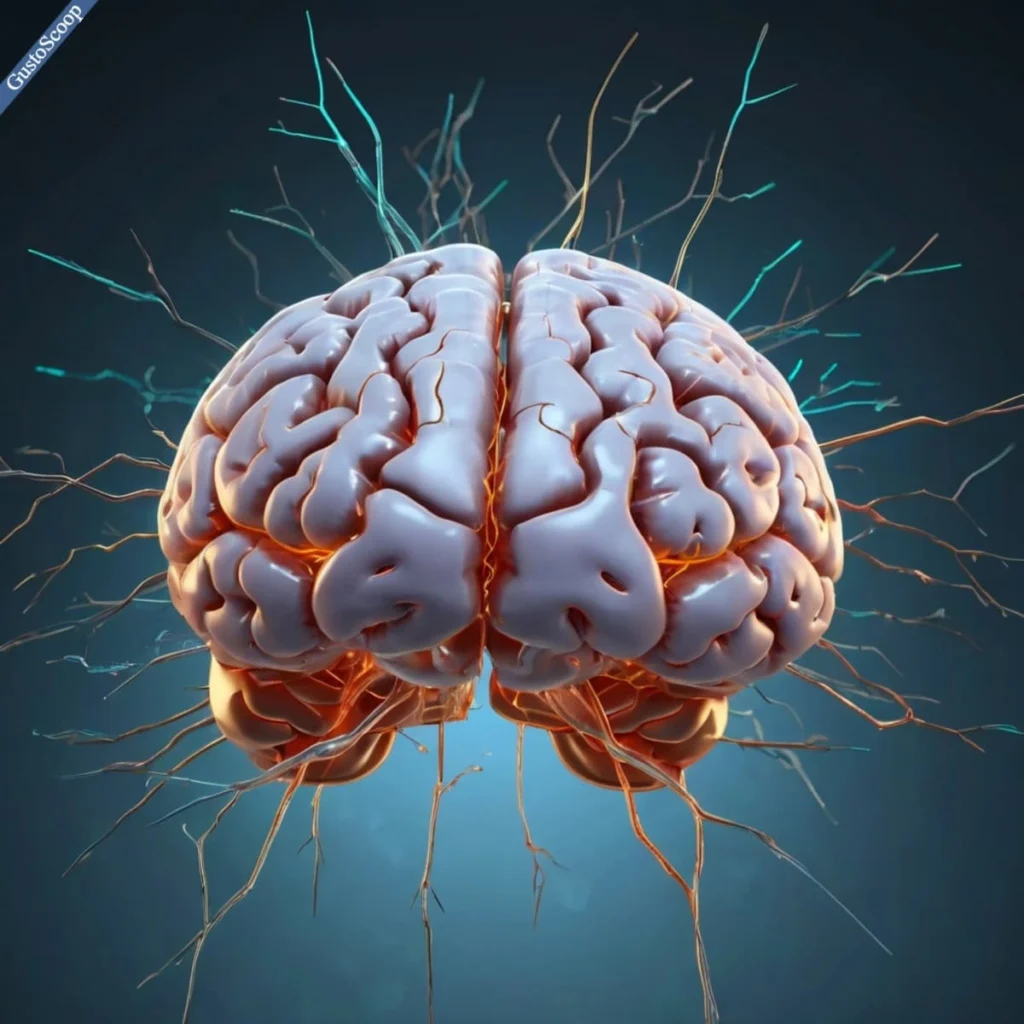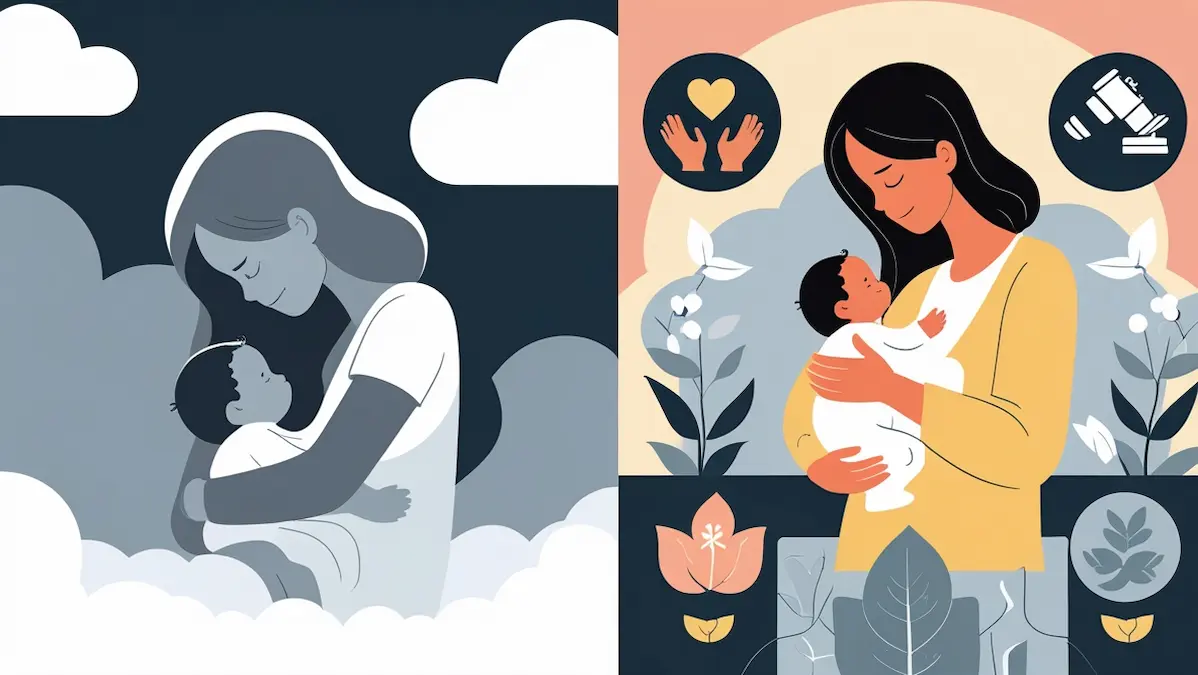Introduction: The Silent Struggle of Postpartum Depression
• Imagine cradling your newborn, expecting waves of joy, only to feel consumed by an inexplicable darkness. This is the harsh reality for 1 in 7 mothers worldwide who grapple with postpartum depression (PPD)—a condition far more profound than the fleeting “baby blues.” Despite growing awareness, PPD remains shrouded in stigma, leaving countless women to suffer in silence. Recent CDC data (2023) reveals that 15% of new mothers experience PPD, yet only half seek help. This article unravels the science, shares survivor stories, and offers actionable strategies to navigate this isolating journey. From hormonal chaos to societal pressures, we explore how to reclaim light from the shadows.

1. What Is Postpartum Depression? Beyond the Baby Blues
• Postpartum depression is a clinical mood disorder characterized by persistent feelings of sadness, anxiety, and detachment that emerge after childbirth. Unlike the “baby blues”—a brief emotional dip caused by hormonal fluctuations—PPD lingers for weeks or even months, disrupting daily life and bonding with the baby.
• The emotional toll of PPD often manifests as overwhelming guilt, hopelessness, or intrusive thoughts of self-harm. Physically, mothers may battle crippling fatigue, appetite changes, or insomnia unrelated to their infant’s needs. Behaviorally, withdrawal from loved ones or loss of interest in once-loved activities are red flags. Dr. Emily Torres, a perinatal psychiatrist, emphasizes, “PPD isn’t a ‘bad day’—it’s a storm that suffocates joy. Recognizing it as a medical condition, not a personal failure, is the first step toward healing.”

2. The Timeline: When Does the Postpartum Period End?
• Clinically, the postpartum period spans the first six weeks after childbirth. However, PPD doesn’t adhere to a strict timeline. While symptoms often surface within the first three months, a 2022 JAMA study found that 30% of cases emerge after this window. Alarmingly, delayed-onset PPD can strike up to three years postpartum, as revealed in a groundbreaking 2023 Lancet study.
• For many, the question “How long does postpartum depression last?” carries immense weight. Untreated, symptoms may persist for years, but early intervention—through therapy, medication, or lifestyle changes—can shorten episodes to 6–12 months. The variability in timelines underscores the importance of personalized care and ongoing support.
3. Silent Storms: Delayed Onset and Long-Term Impact
• “Can postpartum depression affect you years later?” The answer is a resounding yes. Trauma, hormonal imbalances, or unresolved mental health histories can act as triggers for late-onset PPD. A 2021 study published in Pediatrics found that 10% of mothers experienced depressive symptoms two to three years post-birth, often dismissed as “normal” stress. Societal pressure to “move on” exacerbates the isolation, leaving many women to suffer in silence.
• Late-onset PPD is frequently masked by the demands of parenting toddlers or returning to work. Dr. Rachel Goldman, a clinical psychologist, explains, “The narrative that PPD only happens ‘right after birth’ is dangerously misleading. Women need permission to acknowledge their pain, no matter when it surfaces.”
4. The Culprits: Biological and Psychosocial Triggers
• The biological roots of PPD are deeply tied to the dramatic hormonal shifts following childbirth. Estrogen and progesterone levels plummet within 48 hours of delivery, disrupting neurotransmitters like serotonin and dopamine that regulate mood. Genetics also play a role—women with a family history of depression are twice as likely to develop PPD, according to a 2023 meta-analysis in Nature Mental Health.
• Psychosocial factors amplify the risk. Sleep deprivation, financial strain, and lack of partner support create a perfect storm. A 2023 study in Social Science & Medicine linked exposure to social media’s “perfect mom” narratives to a 20% increase in PPD rates. “The pressure to be ‘Instagram-ready’ while drowning internally is crushing,” shares Sarah, a mother of two who battled PPD for 18 months.

5. Recognizing the Signs: How Do I Know If I’m Depressed?
• Self-assessment is a critical first step. Ask yourself: Do I cry daily without reason? Do I feel numb toward my baby? Have I lost interest in things I once loved? Physical symptoms like unexplained headaches or rapid weight changes are also clues.
• Dr. Linda Murray, author of The Baby Blues Companion, advises, “If your ‘off days’ outnumber your ‘good days’ for more than two weeks, seek help.” Visualizing PPD can be challenging, but survivors like Anna describe it as “wearing a lead cloak—every movement feels impossible, and joy slips through your fingers.”

6. Treatment and Recovery: Pathways to Light
• Therapy is a cornerstone of PPD treatment. Cognitive Behavioral Therapy (CBT) helps reframe negative thought patterns, reducing symptoms in 60% of cases. For severe PPD, medications like SSRIs (e.g., sertraline) are safe during breastfeeding and can restore chemical balance. Brexanolone, an FDA-approved IV treatment, targets hormone-sensitive mood swings, offering relief within days.
• Lifestyle changes also play a pivotal role. A 2022 Journal of Women’s Health study found that 30 minutes of daily walking lowers PPD risk by 26%. Nutrition matters, too—iron-rich foods combat fatigue, while omega-3s boost brain health. “Healing isn’t linear,” says Dr. Torres. “Small, consistent steps—like a five-minute meditation or a walk—build resilience over time.”

7. Real-Life Triumphs: Expert Insights and Survivor Stories
• Maria, a 34-year-old teacher, battled PPD for 18 months before joining a peer support group. “I felt like a ghost in my own life,” she recalls. Through CBT and medication, she rebuilt her bond with her daughter. “Asking for help was my turning point,” she says.
• Dr. Lisa Chen, a leading researcher in maternal mental health, stresses the power of community: “Isolation fuels PPD. Whether it’s therapy, a friend, or an online group, connection is medicine.”

8. Cutting-Edge Research and Future Hope
• Innovations in telehealth have increased access to PPD treatment by 40% since 2020, bridging gaps for rural or underserved populations. Researchers are also exploring oxytocin nasal sprays to enhance maternal-infant bonding and psychedelic-assisted therapy for treatment-resistant cases.
• A 2023 global study in The Lancet Psychiatry highlighted promising results from mindfulness-based interventions, with participants reporting a 35% reduction in symptoms after eight weeks. “Science is finally catching up to the complexity of PPD,” says Dr. Goldman. “There’s hope on the horizon.”
9. Daily Strategies: Building Resilience and Joy
• Prioritizing self-care is non-negotiable. Sleep when the baby sleeps, hydrate relentlessly, and delegate tasks without guilt. Apps like Calm offer guided meditations tailored for new moms, while platforms like Postpartum Support International connect women worldwide.
• Building a support network is equally vital. “Your village isn’t a luxury—it’s a lifeline,” says Maria. Whether it’s a partner, therapist, or online community, lean on others without shame.
Conclusion: Rising Stronger From the Shadows
• Postpartum depression is not a life sentence. With science-backed treatments, compassionate support, and relentless self-advocacy, recovery is not just possible—it’s probable. If this resonates, know you’re not alone. Speak up, reach out, and take that first step toward light. Your story isn’t over; it’s evolving.
• Call to Action: If you or someone you love is struggling, contact the National Maternal Mental Health Hotline You deserve support, and hope is a phone call away.

